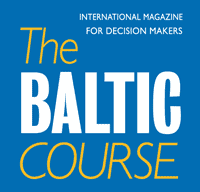Direct Speech, Education and Science, EU – Baltic States, History, Latvia, Legislation
International Internet Magazine. Baltic States news & analytics
Sunday, 19.10.2025, 16:13
On the history of personal responsibility
 Print version
Print versionSome tribes have survived in
isolated regions of the world (the Amazon delta, islands in the Pacific Ocean)
that can be classified as belonging to archaic or traditional cultures. They
are more or less homogenous preliterate human communities that lack social
differentiation and specialisation of members (except biologically determined
gender and age differentiation), its lifestyle being mainly determined by
traditions established by previous generations.
Despite unconditional beliefs in
the absolute power of supernatural forces and magical procedures, traditional
cultures have evolved some effective psychological techniques, for example in
funeral rituals (helping the deceased person in the transition from one world
to another and at the same time a form of socialisation for the living), and
for training in socially important activities. Clearly, adaptation in a
traditional culture can be understood only in the context of the tribe’s
stability and its fit to the environment.
The key socialisation ritual is the ritual of initiation, which combines in a sacral act the two most important events of human life – birth and death. Frazer in his famous book “The Golden Bough” calls it the ritual of Death and Resurrection. According to Frazer, the meaning of this ritual for the tribe’s members is the exchange of souls between a person and his totem or the establishment of a sympathetic relationship with a totem or another supernatural agent. In a more realistic way it can be interpreted as the ritual of transition from childhood to adulthood, which means for the member of a traditional society the death of a child and the birth of an adult which at once acquires a new name. The link with a totem in this context is just the necessary and inherent aspect of adulthood in this tribe.
Many of these initiation rituals entailed risks to health and life. The elders prepared youngsters for the ritual in isolation and kept them in isolation for some time after the ritual so that they should get used to their new identity. In traditional culture, all participants of rituals, from onlookers to “managers” and the initiated apparently believed in the reality of the magic transformation. Previous socialisation, special training of the initiated and all elements of the ritual contributed to the shaping of such beliefs. Ornamentation of the body and face, amulets, special costumes, and dramatization of assay were used to stimulate such beliefs and states, supplemented by rhythmic energetically condensed actions of the ritual that drove participants into a trance or ecstasy.
At the same time such practices and techniques can hardly be viewed as a product of conscious activity of specific persons – a priest and/or chief who, it might seem, chose the most effective methods for the solution of topical tasks. Most probably this kind of decision-making presupposed an orientation on some portents. As Vygotsky and Luria wrote, “…in contrast to the objective practice of our methods we can describe magic behaviour as subjective unconsciously used psychological technology” (Vygotsky &Luria, 1993, p.120).
Often a priest or a chief made his decision on the basis of a dream. Lévy-Bruhl describes the situation when a chief of an African tribe reacting to a missioner’s proposal to send his son to a recently organized school answered: “I will see a dream about it”. Vygotsky comments on this: “…Throughsocietal meaning a dream has acquired a regulative function for him: he will act in accordance with what he sees in the dream…” (Vygotsky, 1986, p.58). Vygotsky interprets this link of a dream and future behavior as the primary social function of conveying an instruction from one person to another, which is an internalized way of understanding the dream.
As Lévy-Bruhl remarkedin “La Mythologie Primitive”, for traditional people dreams are even more real than everyday reality, because they belong to a reality of a higher order. For Europeans “doomed” to the priority of abstract thinking and rational activity, it is difficult to grasp and understand the priority of magical thinking in a traditional culture, which exists in a different cultural space in which our common categorical differentiations, like the differentiation of past, present and future, are absent, and where even concepts life and death have no absolute meaning.
Another example of magic
psychological techniques is the confession ritual carried out by a tribal
priest to heal a person who had violated a taboo (Levy-Brühl, 1910).The person was due to describe
all own actionsand feelingsincluding possible transgressionof any nature
whatsoever. The narrative worked in these public circumstances simultaneously as
a visitation and as psychotherapy. Similar methods can be observed in cathartic
psychotherapy of Breuer and Janet at the end of the XIX c. and in
psychoanalytic free-association method a little later.
Most probably some innovations
introduced in the initiation, funeral or interrogation-confession rituals by
some priests were perceived by them not as the product of their mind but as the
voice of a totem spirit, a divine creature that reveals his will by using them
as agents. It is not they who do it, but the deity that speaks and acts through
their bodies. The transmission of these techniques did not involve verbal
instruction, but rather practical personal involvement at all stages of the
preparation and realisation of these rituals.
Next stage of responsibility development can be found
in the descriptions of Ancient Indian schools where special learning techniques
for efficient memorization – mnemonics – were elaborated.
Canonical authentic texts in the Indian Vedic oral tradition survived for more than a thousand years due to a specially organised caste school where teachers (a Guru) viewed full memorization and preservation of canonical texts (sutras and comments on them) as their main task. Since the creation of sutras (poetic hymns or mantras serving as spells, riddles, descriptions of a ritual, etc.) was considered to be a divine act of obtaining supernatural knowledge through sacral sages (rishi), the oral reproduction of Vedic texts had to be ensured in exactly the same canonical form.
To ensure memorization of such a huge volume of texts (suffice is to say that one of the oldest Vedic texts, the Rgveda, comprises more than a thousand hymns; theYajurvedaand the Samaveda were as big) special techniques were devised. Among them were the division of a text into primary units and then gradual increase of the units and the change of their structure, rhythmic organisation of these units in unison with breathing, recitative singing of texts etc. Only Vedic stage mnemonics that partly survived till today can explain the surprising achievements of ancient Indian society in the preservation of huge texts in an authentic form.
The effectiveness of these
methods of memorization is particularly obvious if one compares the wonderful
results of the retention of the Vedic texts in ancient Indian schools to the
less successful retention of a smaller amount of more readily available texts
in Sumerian scribes’ school of the same time. In Indian schools thousands of
texts and their parts were reproduced exactly, while in Sumerian schools those
reproduced by the best pupils numbered only dozens(Матулис, 1998).In the same time pupils or their teachers –
Brahmans – didn’t feel responsibility for the use and understandingof the
sutrasbecause it was regulated by supernatural powers. They feel themselves
nothing else than transmitters of these texts.
It differs radically from the
practice of contemporary priests who are using sacral texts of the Bible.Transitional
stage from the limited responsibility of Brahmans in Ancient India to a new
type of intellectual culture in Ancient Greece was the sacral practice in
Ancient Egypt. Egypt’s priests used the interpretation of dreams sent by God in
the temple (Murray, 1949). It means that they conceded a human being can try adapting
to the divine world order or ignoring such opportunity.The choice is less
conscious as spontaneous (Вейнберг, 1986).
The more advanced hermeneutic practices were cultivated in Jewish yeshivas on the stage of the Diaspora and in Ancient Greece.However, it was limited dramatically by divine will. In the same time, we can find in ancient cultures the idea of a convention between a man and the God that presupposes the definite area of personal responsibilityof man subordinated to the God’s will (Вейнберг, 1986).
In the Middle Ages and Renaissance all social innovators relied their ideas and declarations on the basis of the God’s will. At the moment, many countries celebrate 500th anniversary since the beginning of the Reformation. The key point of this event was Martin Luther’s declaration in Wittenberg against the sale of indulgences. His main argument was that this sale is in the contradiction with the God’s will according to the Bible. It means that in the beginning Luther represented himself less as reformer than as conservative.Only later he became the religious reformerthanks to the support of German secular authorities. All other leaders of the Reformation started from the interpretation of the Bible’s spirit too.
Even a cursory look at centuries-long history suggests that the contemporary view on personal responsibility is a relativelynew concept emerged in the Modern history.
References
Frazer, J. G. (1890/1922).The Golden Bough: a study of magic and
religion.New York: Macmillan.
Levy-Brühl, L.
(1910). Les functions mentales dans les sociétés primitives.
Paris:
Les Presses universitaires de France.
Murray, M.A.
(1949). The Splendour That Was Egypt.
New York: Philosophical Library.
Вейнберг, И.П. (1986). Человек в культуре Древнего
Ближнего Востока. М. Наука.
Выготский,
Л.С. (1986). Конкретная психология человека. Вестник Московского
университета. Сер.14. Психология. № 1, с. 52-65.
Выготский,
Л.С., Лурия, А.Р. (1930/1993). Этюды по истории поведения. Москва:
Педагогика-Пресс.
Матулис, Т.Н. (Ред.) (1998). От глиняной таблички к университету. Изд. Российского университета дружбы
народов.








 «The Baltic Course» Is Sold and Stays in Business!
«The Baltic Course» Is Sold and Stays in Business!

